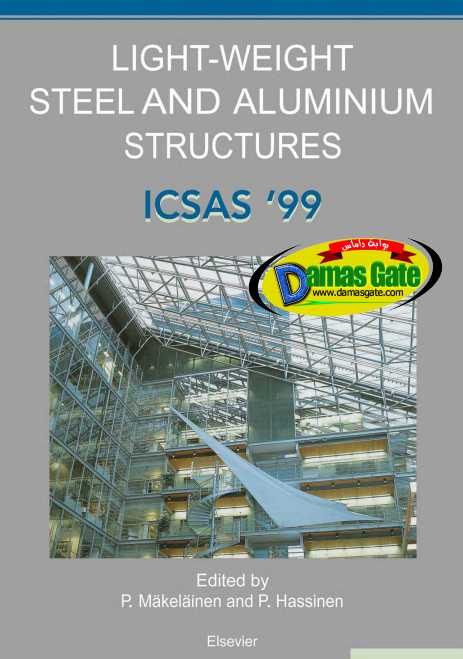Light-Weight Steel and Aluminium Structures

INTRODUCTION
In recent years, the practical usage of cold-formed steel sections has grown rapidly and there has been an evolution in the methods and procedures available for their design. This is evidenced in the various national and international standards, not least Eurocode 3 : Part 1.3 (CEN 1996).
It is implicit that practical designers do not wish to use a sophisticated and detailed analysis, such as is available using the finite element method. They are looking for much simpler calculation procedures which can be carried out manually or, at worst, with a simple spreadsheet. However, some aspects of the behaviour of cold formed sections are extremely complex so that this is an aim which is difficult to meet. The primary alternative to deriving simple models with which to describe complex behaviour is to use testing. However, this has to be carried out full scale and is inevitably expensive. In the present state of the art, it is rarely justified and then only when a large number of identical elements are to be built so that the cost can be offset against the resulting economic gains.
This paper attempts to give an overview of the current state of the art by reviewing the main phenomena which require to be modelled and the design models that are available. Sophisticated analysis or testing are yardsticks by which the success or otherwise of these models may be judged. It is shown that, although many of tiiese behavioral phenomena have their own specific design models, Generalised Beam Theory (GBT) can embrace most of the required characteristics within a single unified approach.
Download
*

INTRODUCTION
In recent years, the practical usage of cold-formed steel sections has grown rapidly and there has been an evolution in the methods and procedures available for their design. This is evidenced in the various national and international standards, not least Eurocode 3 : Part 1.3 (CEN 1996).
It is implicit that practical designers do not wish to use a sophisticated and detailed analysis, such as is available using the finite element method. They are looking for much simpler calculation procedures which can be carried out manually or, at worst, with a simple spreadsheet. However, some aspects of the behaviour of cold formed sections are extremely complex so that this is an aim which is difficult to meet. The primary alternative to deriving simple models with which to describe complex behaviour is to use testing. However, this has to be carried out full scale and is inevitably expensive. In the present state of the art, it is rarely justified and then only when a large number of identical elements are to be built so that the cost can be offset against the resulting economic gains.
This paper attempts to give an overview of the current state of the art by reviewing the main phenomena which require to be modelled and the design models that are available. Sophisticated analysis or testing are yardsticks by which the success or otherwise of these models may be judged. It is shown that, although many of tiiese behavioral phenomena have their own specific design models, Generalised Beam Theory (GBT) can embrace most of the required characteristics within a single unified approach.
Download
*